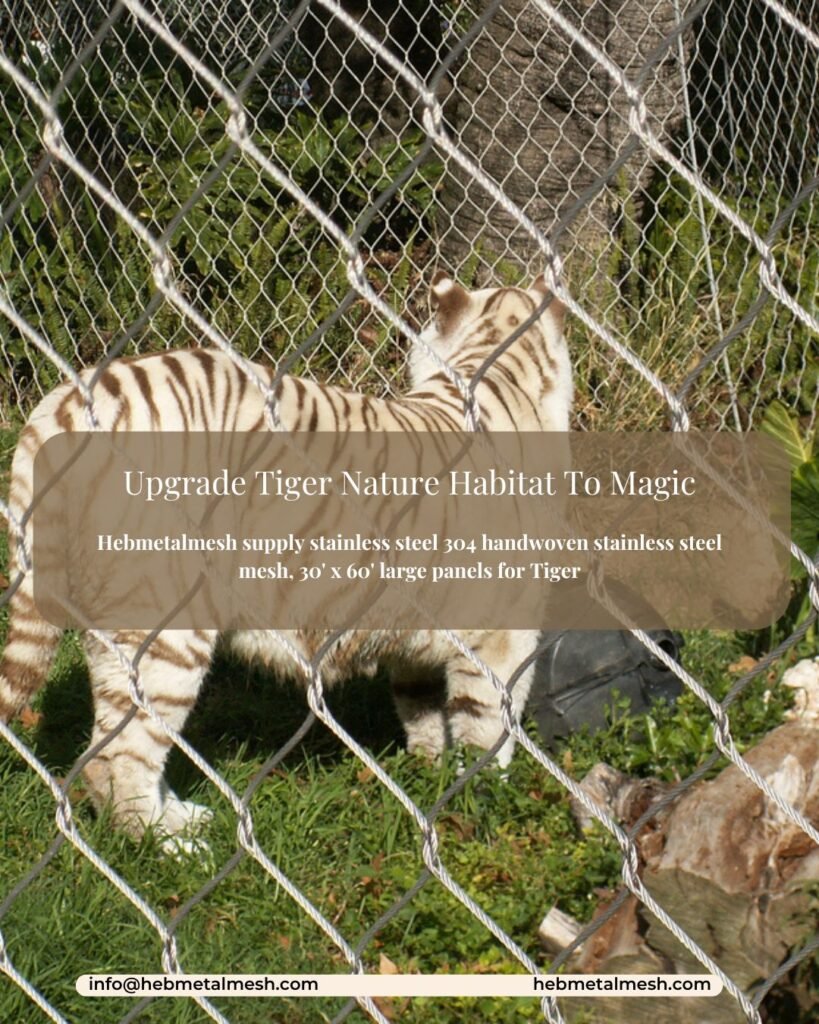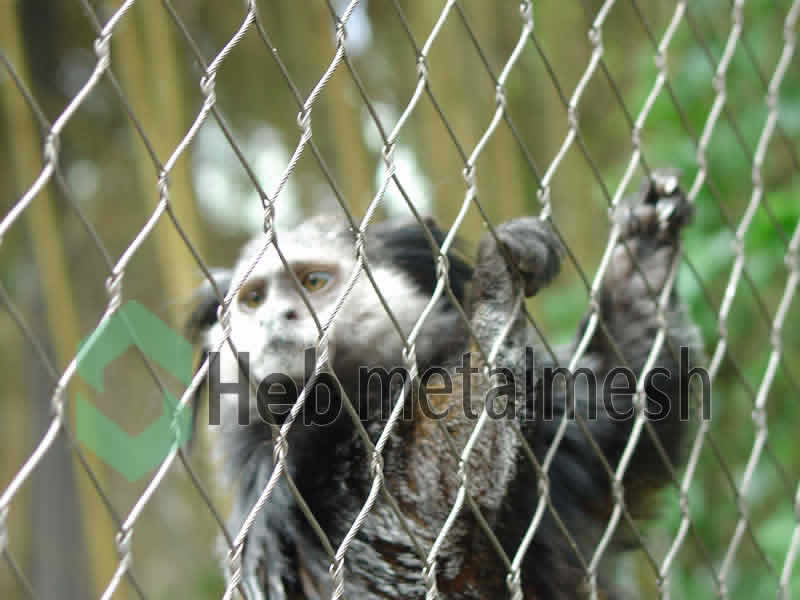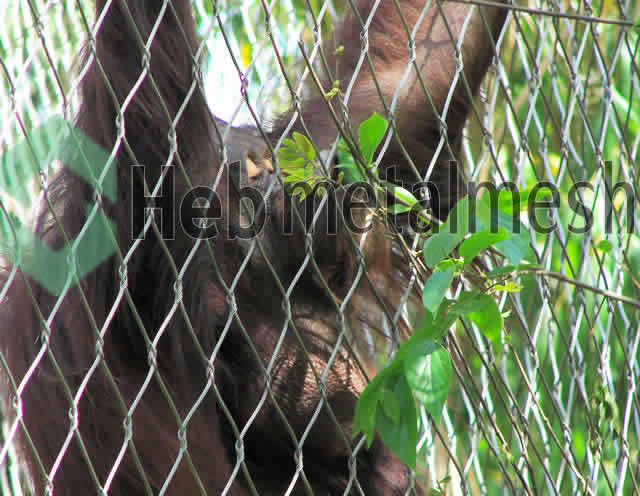Introduction to Animal Safety
Animal safety is a critical consideration for both wildlife and domestic animals, encompassing a range of factors that contribute to their well-being. This concept is rooted in the understanding that every animal, regardless of its habitat, deserves a safe and secure environment. To ensure their health and happiness, it is essential to address aspects such as habitat preservation, ethical treatment, and the establishment of safe enclosures. These elements work collectively to foster a protective milieu that promotes animal welfare.
Habitat preservation plays a pivotal role in animal safety, especially for wildlife. As natural environments continue to face threats from urbanization, pollution, and climate change, many species find their homes and resources dwindling. Protecting these habitats is not just crucial for the survival of animal populations but also for maintaining ecological balance. Conservation efforts aimed at safeguarding these areas are fundamental in addressing the challenges that animals face in the wild.
Equally important is the ethical treatment of animals, which underscores the need for compassion and responsibility in our interactions with them. Ethical practices include not only proper care for pets and livestock but also the respect and consideration towards wildlife. This principle extends to various human activities, such as agriculture, research, and entertainment, ensuring that animals are not subjected to unnecessary harm or suffering.
Safe enclosures are another vital factor in promoting animal safety, particularly for domesticated animals. Whether it pertains to designing secure fencing for pets or creating humane habitats for wildlife in captivity, these structures are integral in protecting animals from external threats while providing them with a comfortable living space. The integration of innovative solutions, such as handwoven stainless steel mesh, can significantly enhance the safety of enclosures, providing both durability and effectiveness.
Understanding Handwoven Stainless Steel Mesh
Handwoven stainless steel mesh is an innovative material that combines strength and flexibility, making it a favored choice in various applications, including those related to animal safety. This type of mesh is crafted through intricate hand weaving techniques that result in a product characterized by its unique properties. One of the most notable features of handwoven stainless steel mesh is its exceptional durability; it is resistant to wear and tear, ensuring a long lifespan even under challenging conditions.
Another significant advantage of this material is its resistance to rust and corrosion. Traditional materials, such as standard steel cages or enclosures, often degrade over time, posing a risk to animal safety. However, handwoven stainless steel mesh maintains its integrity regardless of exposure to moisture or harsh environmental factors. This resistance to corrosion not only prolongs the lifespan of the mesh but also provides a secure environment for animals, safeguarding their health and well-being.
Handwoven stainless steel mesh is additionally characterized by its versatility. Its flexible design allows it to be shaped and structured to meet the specific needs of various applications, from protective enclosures in animal shelters to reinforcement in veterinary practices. This adaptability ensures that it can be employed in diverse settings, enhancing safety measures designed to protect animals in both domestic and professional environments.
Moreover, the aesthetic appeal of handwoven stainless steel mesh cannot be overlooked. Its sleek and polished finish contributes to a more visually pleasing environment while still prioritizing functionality. This balance between practicality and design underscores its relevance to the overarching subject of animal safety, highlighting its role as an essential construct in safeguarding the lives of animals and promoting their well-being.

The Role of Handwoven Stainless Steel Mesh in Animal Enclosures
Handwoven stainless steel mesh has emerged as a revolutionary material in the design and construction of animal enclosures across various settings, including zoos, sanctuaries, and private facilities. Its unique characteristics not only ensure the safety of animals but also provide an unparalleled level of visibility and interaction between the animals and their visitors. This effectiveness stems from the mesh’s durable composition, which deters escape while promoting a secure environment for both wildlife and humans.
One significant application of handwoven stainless steel mesh can be seen in zoos, where enclosures require not only strength but also aesthetic appeal. For example, many modern zoos utilize this material to create barriers for large mammals such as lions and tigers. The sturdy yet flexible nature of the mesh provides an effective deterrent against escapes while allowing visitors to observe the animals closely without compromising safety. Case studies from prominent zoos indicate that incidents of animal-related accidents have significantly reduced since the incorporation of this advanced material.
In animal sanctuaries, the welfare of the animals is paramount. Handwoven stainless steel mesh is often used in enclosures for rescued wildlife, ensuring that they can inhabit a secure environment while rehabilitating. This mesh allows for proper ventilation and sunlight exposure, which are essential for the animals’ physical and psychological well-being. Testimonials from sanctuary operators highlight how the introduction of stainless steel mesh has led to improved recovery rates among the resident animals, showcasing its critical role in promoting animal safety.
Overall, the integration of handwoven stainless steel mesh into animal enclosures exemplifies a significant advancement in the field of animal safety. Its combination of strength, visibility, and affordability presents a modern solution for wildlife preservation and humane treatment across various facilities.
Benefits of Using Handwoven Stainless Steel Mesh for Exhibits
The utilization of handwoven stainless steel mesh in animal exhibits presents numerous advantages that merge aesthetic appeal with functionality, ultimately enhancing animal safety. One of the foremost benefits lies in its remarkable strength. Unlike conventional materials, this specialized mesh offers durability and resistance to wear and tear, ensuring that it can withstand the rigorous demands of various species while providing a secure environment for them. This is particularly vital when housing larger animals or those with strong instincts, as the integrity of the mesh plays a crucial role in preventing potential escape or accidents.
Moreover, flexibility is another significant characteristic of handwoven stainless steel mesh. It can be customized to fit an array of exhibit designs and habitats, accommodating the specific needs of different species. Whether for a tropical rainforest environment or an arid desert setting, the mesh can adapt seamlessly. This flexibility not only aids in crafting tailored habitats but also enhances the visual experience for visitors. The transparent nature of the mesh allows for unobstructed views of the animals, fostering an interactive and immersive experience. Such designs can encourage visitors to engage with educational materials, promoting awareness about conservation and animal safety.
Additionally, the aesthetic appeal of handwoven stainless steel mesh is undeniable. It integrates modern design elements that align with contemporary exhibit trends, attracting visitor interest while maintaining a focus on animal welfare. The ability to blend structural integrity with an elegant appearance ensures that exhibits remain inviting and informative. As institutions prioritize the ethical treatment of animals, using such materials not only supports animal safety but also reflects a commitment to innovative design in the zoological and exhibition fields.

Habitat Conservation and Animal Safety
Habitat conservation plays a pivotal role in ensuring animal safety, particularly in the preservation of natural ecosystems that support diverse wildlife. One of the emerging solutions in this realm is the use of handwoven stainless steel mesh, which has gained attention for its durability and effectiveness in protecting animal habitats. This innovative material is not only environmentally friendly but also serves as a trusted barrier that enhances the safety of animals in various settings.
By incorporating handwoven stainless steel mesh into habitat conservation efforts, organizations can establish protective enclosures that minimize human-wildlife conflict. These enclosures can effectively prevent animals from straying into urban areas, thereby reducing the likelihood of dangerous encounters with humans. Moreover, the mesh allows for adequate visibility and airflow, meaning that animals can maintain their natural behaviors while being safeguarded from external threats.
Sustainable practices in habitat conservation are intertwined with the use of robust materials like handwoven stainless steel mesh. The durability of this mesh ensures that it can withstand the elements over time, while its manufacturing process can be aligned with environmentally responsible methods. When organizations prioritize these sustainable materials, they not only advance animal safety but also contribute to broader environmental goals, such as reducing waste and conserving resources.
Additionally, the thoughtful design of enclosures using this mesh can significantly enhance the welfare of various animal species. Properly designed habitats allow for natural foraging and social interactions among animals, promoting their well-being. Thus, utilizing stainless steel mesh becomes a vital component in developing innovative solutions that ensure animal safety while enhancing habitat conservation efforts. These initiatives demonstrate a commitment to protecting wildlife while fostering harmonious coexistence with humans.
Innovations in Stainless Steel Mesh Technology
The field of animal safety has seen remarkable advancements in the development of handwoven stainless steel mesh, specifically concerning weaving techniques, design customization, and longevity attributes. Modern innovations in stainless steel mesh technology are playing an essential role in enhancing the security and comfort of animal enclosures. Traditional weaving methods are being replaced or improved upon with techniques that create tighter and more robust mesh patterns. This enhancement not only renders the mesh more resilient but also reduces the risk of injury to the animals housed within these enclosures.
Custom design capabilities have become a focal point in the evolution of stainless steel mesh products. Manufacturers are now able to tailor dimensions, mesh thickness, and weaving patterns to improve animal safety based on specific species and their unique needs. For instance, larger animals may require a sturdier mesh with larger diameter wires, while smaller pets may benefit from finer mesh to prevent escapes and ensure optimum ventilation. This level of customization significantly enhances the effectiveness of enclosures, thereby elevating animal safety standards in various environments, including zoos, farms, and even at-home habitats.
Moreover, advancements in rust-resistant finishes have greatly improved the longevity of stainless steel mesh products. New coatings and treatments are now available that extend the life of the mesh while maintaining its structural integrity, addressing concerns over environmental wear and corrosion. This innovation is particularly impactful for outdoor animal enclosures exposed to varying climatic conditions. As these technologies develop, it becomes increasingly clear that handwoven stainless steel mesh can offer not only practical advantages but also aesthetic appeals, thereby transforming the visual aspect of enclosures without compromising on animal safety.
Expert Opinions on Animal Safety Materials
In the realm of animal safety, the materials used in enclosures and habitats are of paramount importance. Various professionals, including veterinarians, animal behaviorists, and conservationists, emphasize the necessity for high-quality materials that not only provide security but also contribute to the wellbeing of animals. Handwoven stainless steel mesh has emerged as a particularly favored choice among experts for numerous reasons.
Veterinarians often highlight that the quality of enclosure materials can directly impact the health and safety of animals. Dr. Jane Thompson, a prominent veterinarian specializing in wildlife care, asserts that “using robust materials such as handwoven stainless steel mesh significantly reduces the risk of injury caused by sharp edges or wear and tear over time.” This expert insight underlines the durability of stainless steel, which is resistant to corrosion and can withstand various environmental conditions, ensuring prolonged safety for the inhabitants of animal enclosures.
Animal behaviorists also weigh in on the subject, noting that the materials chosen for habitats can influence animal behavior and stress levels. Dr. Mark Roberts, a leading animal behaviorist, explains, “A secure and comfortable environment is critical for reducing stress in animals. High-quality materials like stainless steel mesh not only keep animals securely contained but also allow for visibility and ventilation, which can enhance their overall comfort.” This perspective emphasizes that ensuring animal safety goes beyond mere containment; it involves creating an environment conducive to positive behavioral outcomes.
Conservationists argue that the materials used in enclosures play an essential role in protecting wildlife, particularly in rehabilitation and breeding programs. “The use of sustainable materials contributes to better animal safety while aligning with our conservation goals,” states Linda Harris, a conservation expert. Handwoven stainless steel mesh provides a strong and sustainable solution, protecting wildlife from external threats while facilitating their rehabilitation.
These insights collectively reinforce the significance of selecting high-quality materials like handwoven stainless steel mesh in ensuring effective animal safety. The expert opinions clearly illustrate that investing in superior materials enhances not only the physical security of animals but also their overall well-being, making it an essential consideration for anyone involved in animal care.
Challenges and Considerations in Implementation
The implementation of handwoven stainless steel mesh as a solution for animal safety presents an array of challenges and considerations that must be carefully navigated. One of the predominant concerns is the initial investment cost associated with this innovative material. Although stainless steel mesh can offer long-term durability and protection, the upfront expenses may deter some stakeholders, especially smaller organizations or individuals from using it for animal containment or habitat protection. A proactive approach to budgeting and exploring funding options can assist in mitigating these expenses.
In addition to financial considerations, the installation of stainless steel mesh can present logistical difficulties. The requirement for specific tools and skilled labor can complicate the installation process, particularly in remote or challenging environments. Ensuring a perfect fit is critical, as improper installation can lead to gaps that expose animals to potential threats. Various species have unique needs and behaviors, necessitating tailored installation strategies that consider their specific habitats. Thus, thorough planning and training become essential components of successful implementation.
Maintenance is another critical aspect when adopting stainless steel mesh for animal safety. The material is known for its resistance to environmental factors; however, regular inspections should be conducted to identify wear and tear that may occur over time. Neglecting maintenance can lead to safety breaches, endangering the very animals the mesh was designed to protect. Moreover, specific habitats may require additional considerations, such as the mesh’s interaction with local wildlife. Taking these diverse factors into account ensures a comprehensive approach to the safety of various species, fostering an effective integration of this innovative solution.

The Future of Animal Safety and Handwoven Stainless Steel Mesh
As we look toward the future of animal safety, it is essential to consider the ongoing development and application of innovative materials such as handwoven stainless steel mesh. This versatile product has the potential to revolutionize various environments, including wildlife sanctuaries, farms, and urban areas, where animal welfare is of increasing concern. The integration of handwoven stainless steel mesh can play a significant role in safeguarding wildlife and domestic animals alike, offering a durable and sustainable solution for habitat protection.
One of the key trends shaping the future of animal safety is the increasing focus on eco-friendly practices. As industries evolve, there is a growing awareness of the need for sustainable materials that not only protect animals but also minimize environmental impact. Handwoven stainless steel mesh aligns with these values by being recyclable and resistant to weathering, reducing the need for frequent replacements. This characteristic not only leads to cost savings but also contributes to a safer environment for animals, ensuring their habitats remain intact and secure.
Additionally, the advent of technological advancements presents new opportunities for enhancing animal safety measures through handwoven stainless steel mesh. Innovations in mesh design can provide increased flexibility and strength, making it applicable in varied settings. For instance, automated systems combined with this mesh can monitor animal movements and health conditions in real-time, enabling prompt intervention when necessary. Furthermore, advancements in artificial intelligence and machine learning could support the creation of smart enclosures that prioritize the welfare of animals while minimizing human intervention.
In conclusion, the future of animal safety appears promising with the continued development and application of handwoven stainless steel mesh. By embracing eco-friendly practices and technological advancements, we can enhance the welfare of animals across diverse environments, ensuring they remain protected and thrive in their habitats.
FAQs: Animal Safety & Handwoven Stainless Steel Mesh
Absolutely! Our mesh is crafted with animal-safe stainless steel, free from toxic coatings or chemicals. The edges are meticulously smoothed to prevent cuts, and the weave is tight enough to avoid snagging claws or beaks. Ideal for enclosures, aviaries, or garden barriers, it’s a trusted choice for pet owners and farmers prioritizing non-toxic animal enclosure materials.
The smooth, burr-free finish ensures no sharp edges, while the handwoven design eliminates protruding wires. This makes it perfect for chew-proof pet fencing or protecting delicate wildlife like birds and reptiles. The uniform weave also prevents gaps that could trap paws or wings, ensuring safety for curious animals.
Yes! Our rust-resistant stainless steel mesh for outdoor animal enclosures withstands weather while remaining safe. Unlike coated or galvanized meshes (which can flake toxic substances), ours is untreated and corrosion-resistant, making it safe for chickens, rabbits, or even goats in barns or coops.
Birds and rodents won’t ingest harmful particles with our stainless steel mesh safe for parrots and small birds. The high-grade steel resists chewing, and the lack of paint or zinc coatings eliminates poisoning risks. It’s widely used in avian rescues for cages and flight pens.
Designed as a heavy-duty predator-proof stainless steel barrier, the tight weave deters raccoons, foxes, and rodents from breaching coops or garden beds. Its strength protects chickens, rabbits, or backyard beehives without compromising ventilation or visibility.
Simply rinse with water and mild soap—no harsh chemicals needed! Our easy-to-clean stainless steel mesh for animal habitats resists bacteria buildup and doesn’t require toxic disinfectants. Regular maintenance ensures a hygienic space for reptiles, birds, or livestock.


